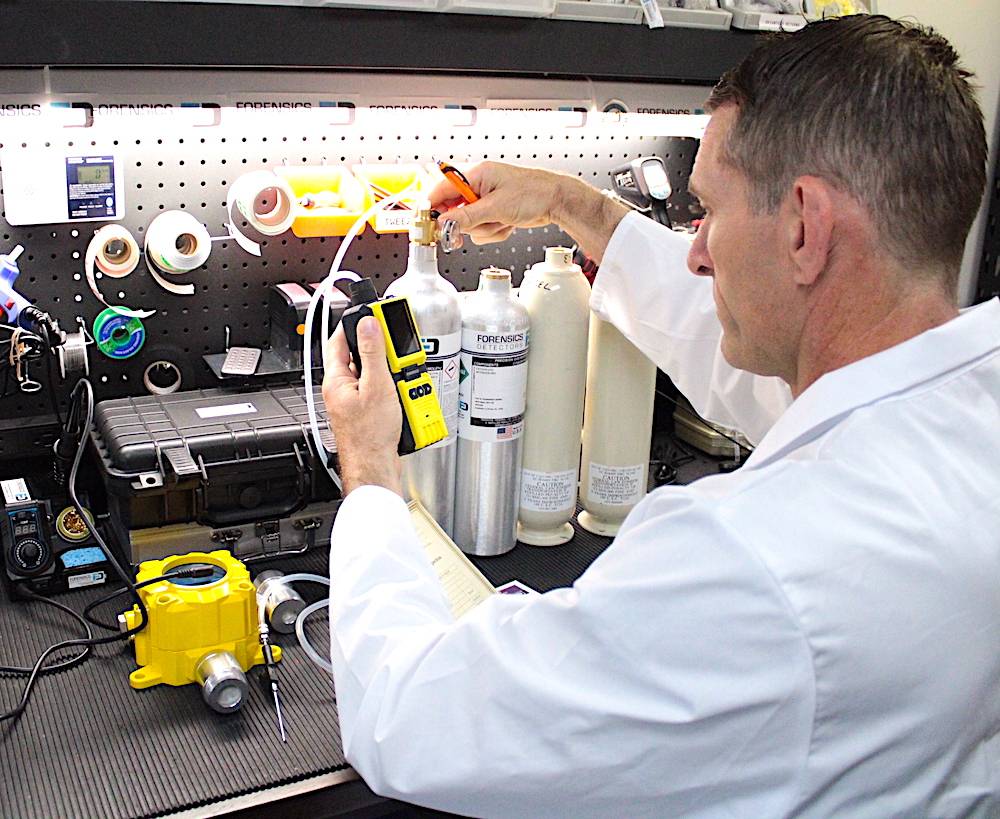Welcome to our article about gas monitoring in industrial settings! In this section, we will explore the common gases that are regularly monitored in industrial environments to ensure safety and compliance. Gas monitoring plays a crucial role in protecting employees from potential hazards, especially in industries where the presence of certain gases can pose a significant risk.
Gas monitoring is a vital practice in various industrial settings, including manufacturing plants, refineries, chemical facilities, and more. The specific gases that need to be monitored may vary depending on the industry and the nature of the work being performed. However, there are several commonly monitored gases that are relevant across different industrial sectors.
By regularly monitoring these common gases, employers can detect and mitigate potential risks, creating a safer work environment for their employees. Let’s dive deeper into the types of gases that are commonly monitored in industrial settings and why it is essential to prioritize gas monitoring in the workplace.
Gas Monitors: Types and Uses
Gas monitors are essential devices used to detect the presence of harmful gases in industrial settings, ensuring workplace safety. These monitors come in various types, each designed to serve specific purposes and cater to different industries.
Portable Gas Monitors: These handheld devices are lightweight and compact, making them ideal for personal monitoring of gas levels. They are commonly used by technicians, emergency responders, and workers in confined spaces.
Fixed Gas Monitors: Also known as stationary gas monitors, these devices are permanently installed in specific areas to continuously monitor gas levels. They provide real-time data and can be integrated with warning systems or control panels for immediate response.
Multi-Gas Monitors: These versatile monitors are capable of detecting multiple gases simultaneously. They are commonly used in industries where workers are exposed to a variety of gases or in environments with potential gas leaks.
Single-Gas Monitors: As the name suggests, these monitors are designed to detect a specific gas, such as carbon monoxide or hydrogen sulfide. They are cost-effective and popular in industries where workers are exposed to high concentrations of one particular gas.
The selection of the appropriate gas monitor depends on the specific needs and requirements of the industry. Factors such as the type of gases present, the working conditions, and the level of exposure dictate the choice of monitor.
When it comes to gas monitoring, it’s crucial to understand the different types of gas monitors available and their specific uses. By utilizing the right gas monitor for a particular industry and workplace, employers can ensure the safety and well-being of their employees.
OSHA Requirements for Gas Monitors
When it comes to workplace safety, OSHA (Occupational Safety and Health Administration) sets specific requirements to protect employees from potential hazards. These requirements also apply to the use of gas monitors in certain situations.
Gas monitors are essential devices used to detect the presence of dangerous or explosive gases in industrial settings. To ensure compliance with OSHA regulations and maintain a safe working environment, employers must adhere to the following requirements:
- Confined Space Monitoring: Gas monitors must be used when employees are working in confined spaces where dangerous gases can collect. This includes tanks, vessels, silos, pits, and crawl spaces.
- Calibration and Maintenance: Gas monitors should be calibrated regularly to ensure accurate readings. OSHA recommends following the manufacturer’s instructions for calibration and maintenance schedules.
- Alarm Systems: Gas monitors must be equipped with audible and visual alarms to alert employees when gas levels reach dangerous thresholds. These alarms should be loud and distinct to ensure they can be heard even in noisy environments.
- Training: Employers are responsible for providing comprehensive training on gas monitor usage, including proper operation, interpretation of readings, and emergency response procedures. Employees should be aware of the potential hazards associated with specific gases and understand the actions to take in case of an alarm.
- Recordkeeping: Employers must maintain records regarding the use, inspection, calibration, and maintenance of gas monitors. These records should be readily accessible for OSHA inspections.
By adhering to OSHA requirements for gas monitors, employers can ensure the safety and well-being of their employees while minimizing the risks associated with workplace hazards.
Conclusion
Gas monitoring is a critical practice in industrial settings to ensure workplace safety and compliance. By regularly monitoring common gases such as oxygen, carbon monoxide, methane, hydrogen sulfide, and refrigerants, employers can effectively protect their employees from potential hazards.
The presence of these common gases in industrial environments can pose serious risks to workers’ health and safety. Gas monitoring systems enable real-time detection and provide early warning signs, allowing prompt action to be taken to prevent accidents and injuries.
Not only does gas monitoring contribute to the well-being of employees, but it also helps companies meet regulatory requirements. Compliance with OSHA standards is essential in maintaining a safe work environment and avoiding penalties. Implementing proper gas monitoring practices demonstrates a commitment to workplace safety and can enhance the overall reputation of the organization.
In conclusion, gas monitoring plays a vital role in ensuring the safety and well-being of workers in industrial settings. By monitoring common gases and adhering to OSHA requirements, companies can create a secure working environment that protects employees from the potential dangers associated with these gases.
Source Links
- https://www.envirotech-online.com/news/gas-detection/8/breaking-news/what-gases-do-detectors-look-for-and-why/59247
- https://www.buygasmonitors.com/blog/types-of-industrial-gas-detectors-choosing-the-right-one/
- https://www.premiersafety.com/blog/gas-monitor-101-everything-you-need-to-know-about-gas-monitors/

